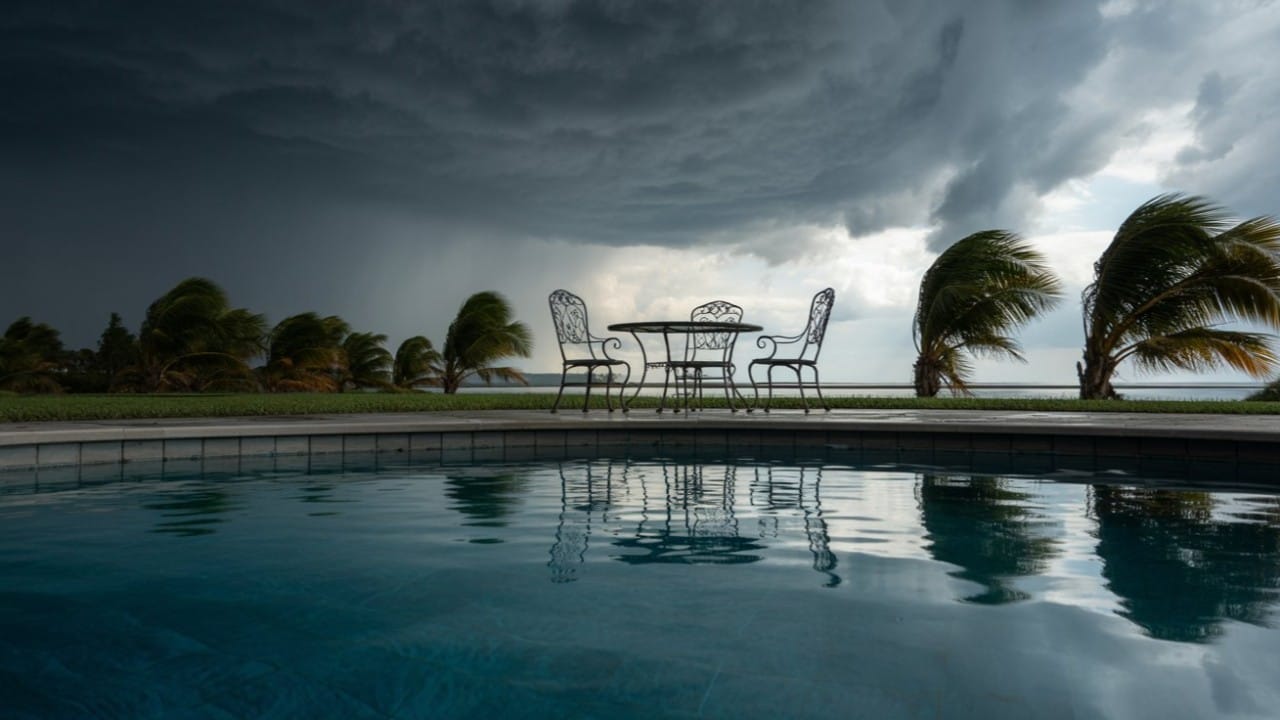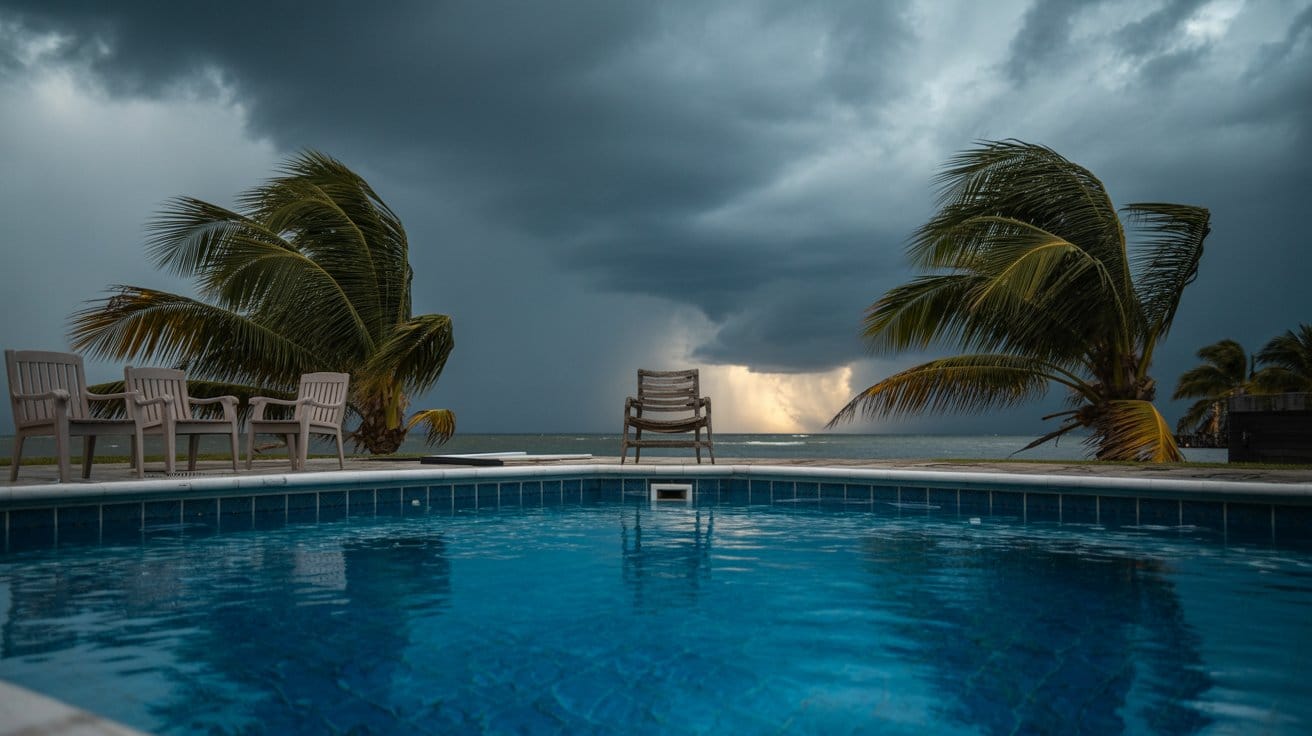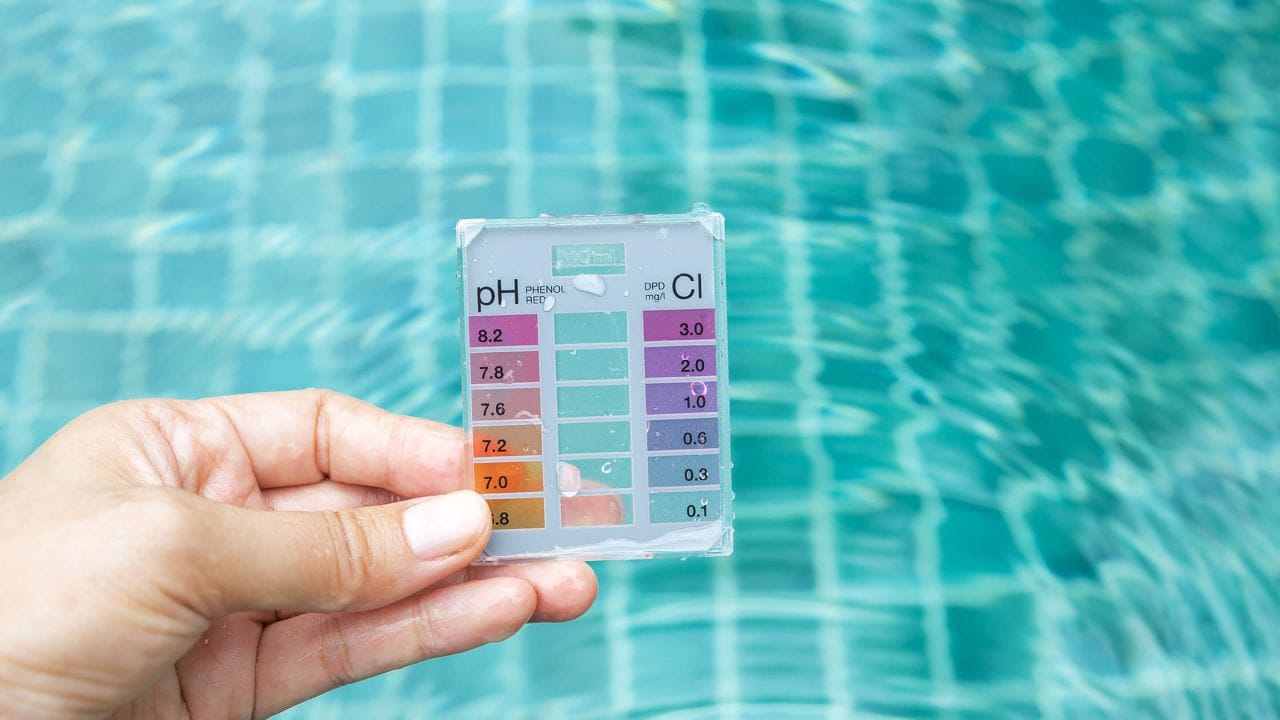How to Protect Your Pool During Hurricane Season: The Draining Myth Explained

Your pool could actually pop out of the ground if you drain it before a storm. Sounds crazy, right?
According to the study of Tropical Cyclone Climatology by the National Hurricane Center and the Central Pacific Hurricane Center, the Atlantic hurricane season runs from June 1 through November 30. However, many pool owners often make critical mistakes when preparing their pools. Many believe they should drain their pools before a storm hits. This common belief is completely wrong and dangerous.
Florida's high water table creates a serious risk. Empty pools face intense pressure from groundwater that can force them to float or pop out of the ground. The damage can be devastating. Structural problems and plumbing issues could cost hundreds of dollars in pump repairs or replacement if the predicted storm changes its path.

The right approach is simple - keep your pool full. The water's weight holds the bottom and sides firmly in place. This piece will help you learn about proper pool protection and answer the question, "Should I drain my pool?" You'll find expert guidance to protect your investment before, during, and after hurricane season.
How to Prepare Your Pool Before a Hurricane
Your hurricane pool preparation needs more than just hoping for the best. The right preventive steps can save you thousands in potential damage.
Start by enhancing your pool's chemical protection. Add a shock dose of chlorine (lower pH to around 7.2 first) and algaecide. This prevents contamination from storm debris and excessive rainwater. Let your filtration system run for several hours to ensure proper circulation.

Your equipment needs protection, too. Turn off all electrical power at the circuit breakers. This affects pumps, filters, chlorinators, heaters, and lighting systems. Wrap all electrical components with waterproof plastic and secure them tightly. When flooding is likely, disconnect these devices and store them in a dry place.
Clear the pool area of anything that could become a projectile:
- Chairs, tables, and umbrellas
- Pool toys and cleaning tools
- Patio accessories and grills
- Automatic pool cleaners
A pool cover during a hurricane isn't a good idea. Strong winds can send debris flying that will damage or destroy the covers. Make sure to trim any weak tree branches around your pool area to reduce damage from falling limbs.
Note that draining your pool isn't necessary. Proper hurricane pool preparation focuses on chemical balance, equipment protection, and debris management while keeping appropriate water levels.
Should You Drain The Pool Before The Hurricane?
Draining your pool can get pricey and cause severe damage. In stark comparison to this, which might seem logical, an empty pool creates more problems than it solves.

Your empty pool faces massive pressure from groundwater, especially when you have high water tables like in Florida. Underground water can push your pool right out of the ground, making it "pop" or float. Your pool's water weight (approximately 8 lbs per gallon) counteracts this pressure. A pool shell that weighs 250,000 lbs when full loses 80% of its weight after drainage.
Vinyl liner pools face their own risks from drainage. The liner might shrink, wrinkle, or tear apart. Your above-ground pool's walls could collapse without water's outward pressure.
Fiberglass pools need extra care because they often develop cracks or bulges that void warranties. Even your concrete pool should stay filled - two weeks empty is the maximum time before structural damage occurs.
Environmental impact needs attention, too. Pool water has chemicals that harm aquatic ecosystems. Many areas now ban the discharge of chlorinated pool water into streets or storm drains.
Note that your pool's design works best with water. A filled pool maintains structural integrity, especially during hurricanes when saturated ground creates extra pressure around your pool.
Post-Storm Pool Care and Recovery
The restoration of your pool after a hurricane requires careful attention to safety and systematic cleanup. At the time of your first inspection, look for hazards like downed power lines, standing water near electrical equipment, or unstable trees. Your safety should be your top priority before starting any pool restoration work.

Ensure the area is safe, then take photos of any visible damage for your insurance claim. You can remove large debris with a leaf net or skimmer. Then you can use a robotic pool cleaner to take care of the rest. Avoid vacuuming your pool when it contains sharp objects, as this can damage your equipment.
Your pool system needs a complete inspection before restarting. The power should stay off if you see water damage, smell burning, or notice electrical problems. You should clean out skimmer baskets and pump strainers to avoid clogs. Lightning can create hidden electrical issues, so it's best to get a professional inspection of these components.
The next step involves testing and balancing your water chemistry. Start by adjusting total alkalinity (80-120 ppm), followed by pH, calcium hardness, and other parameters. A shock treatment will raise chlorine levels to about 10 ppm, which eliminates contaminants effectively.
Let your filtration system run continuously until the water becomes clear, which usually takes several days. Keep checking filter pressure and backwash as needed during this time.
Note that draining your pool after a storm can lead to structural damage due to high groundwater levels.
Conclusion
Pool protection during hurricane season needs proper knowledge and preparation instead of following dangerous myths. Draining your pool creates fewer problems than it solves. Water's weight protects your pool's structure against powerful hydrostatic pressure that could make it pop out of the ground.
You should shock your pool, secure all equipment, and remove potential projectiles from the area before storms arrive. These simple steps will reduce your risk of damage by a lot. Trimming weak tree branches also stops them from turning into dangerous missiles in high winds.
Safety becomes your main goal once the storm passes. Look for hazards like downed power lines or electrical issues before you start cleanup. Document any damage for insurance, then remove debris and fix the water chemistry. Give your filtration system enough time to clear the water properly.
Hurricane season creates challenges for pool owners. A well-prepared pool owner can protect their investment with the right knowledge. The facts are simple - full pools handle storms better than empty ones. Proper chemical treatment prevents contamination, and effective post-storm maintenance will help your pool recover quickly.
Explore more tips about pool maintenance in Aiper Blog, keep your pool enjoyable long after hurricane season.

